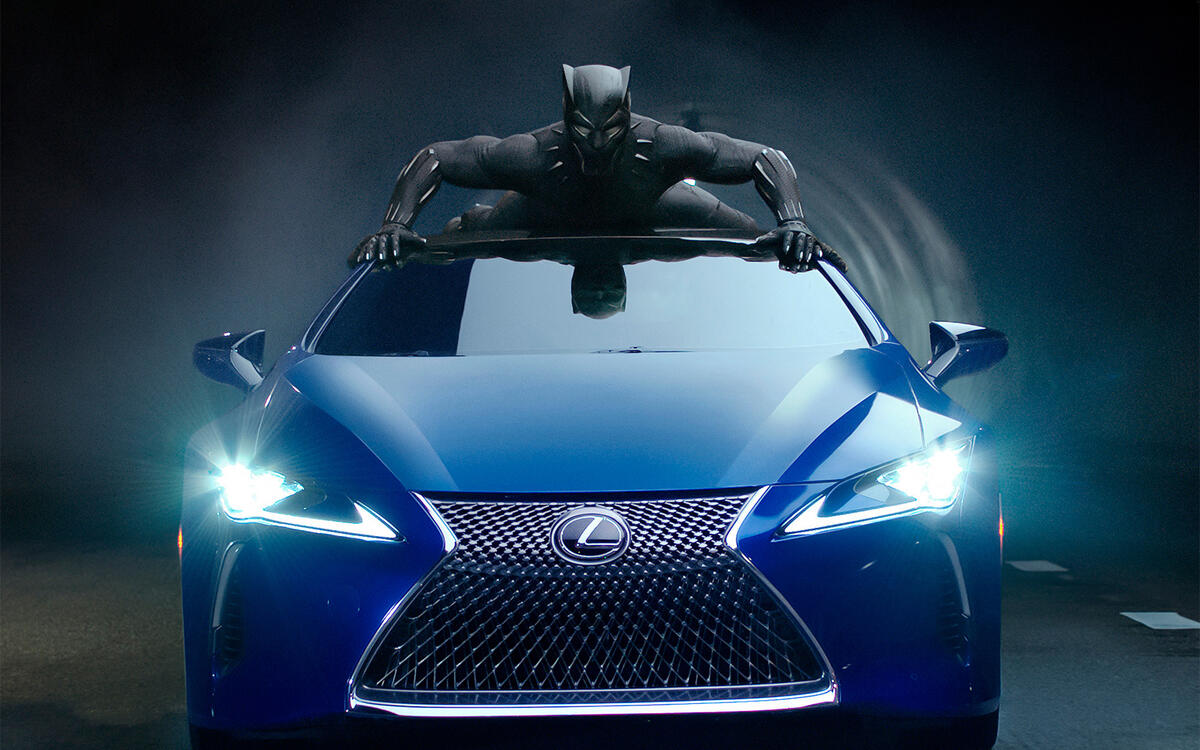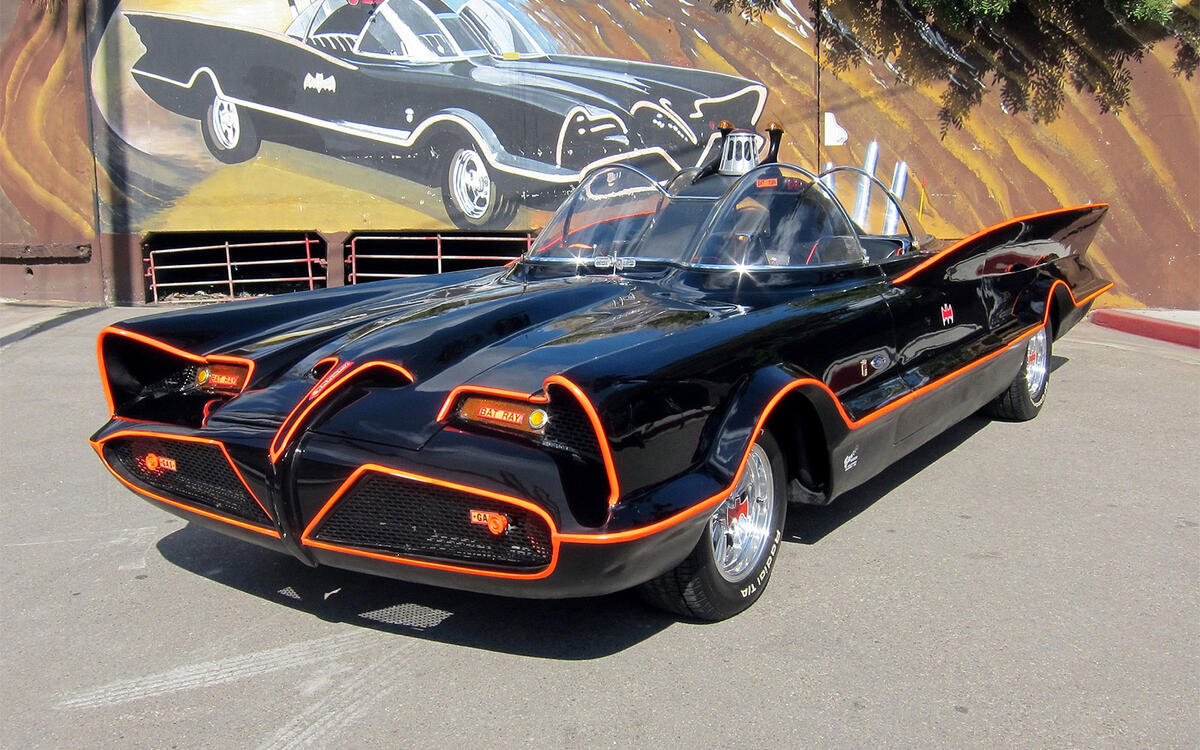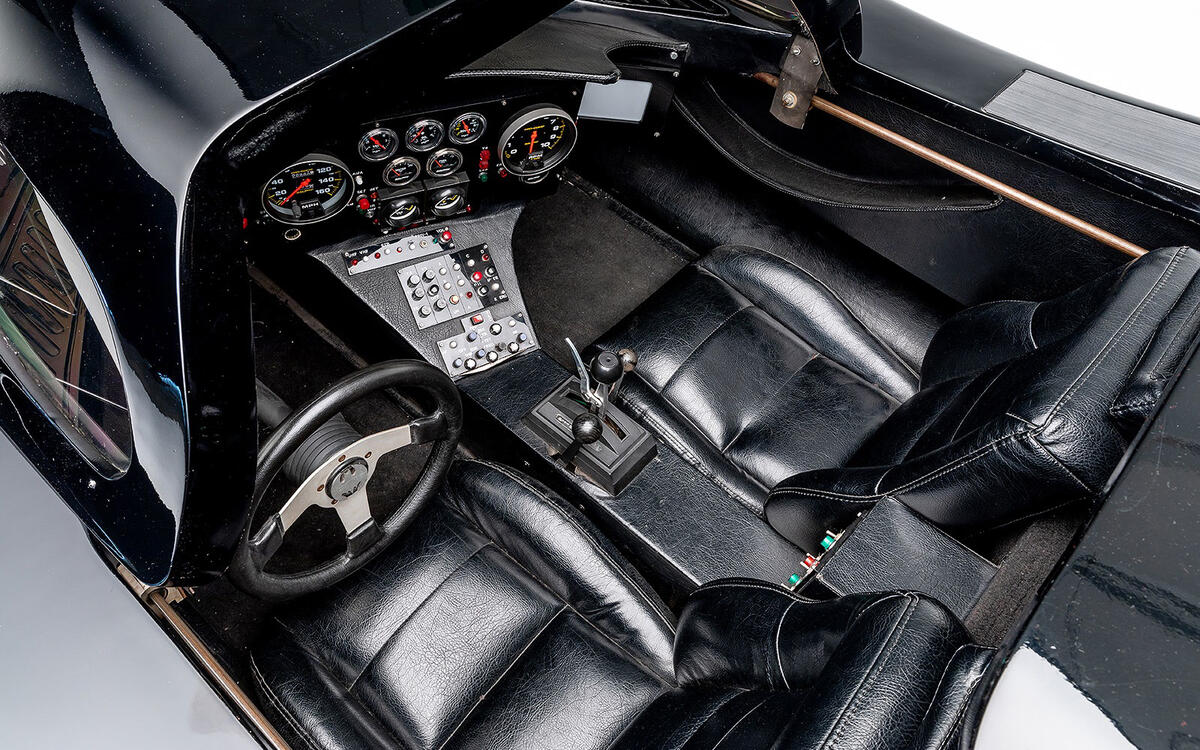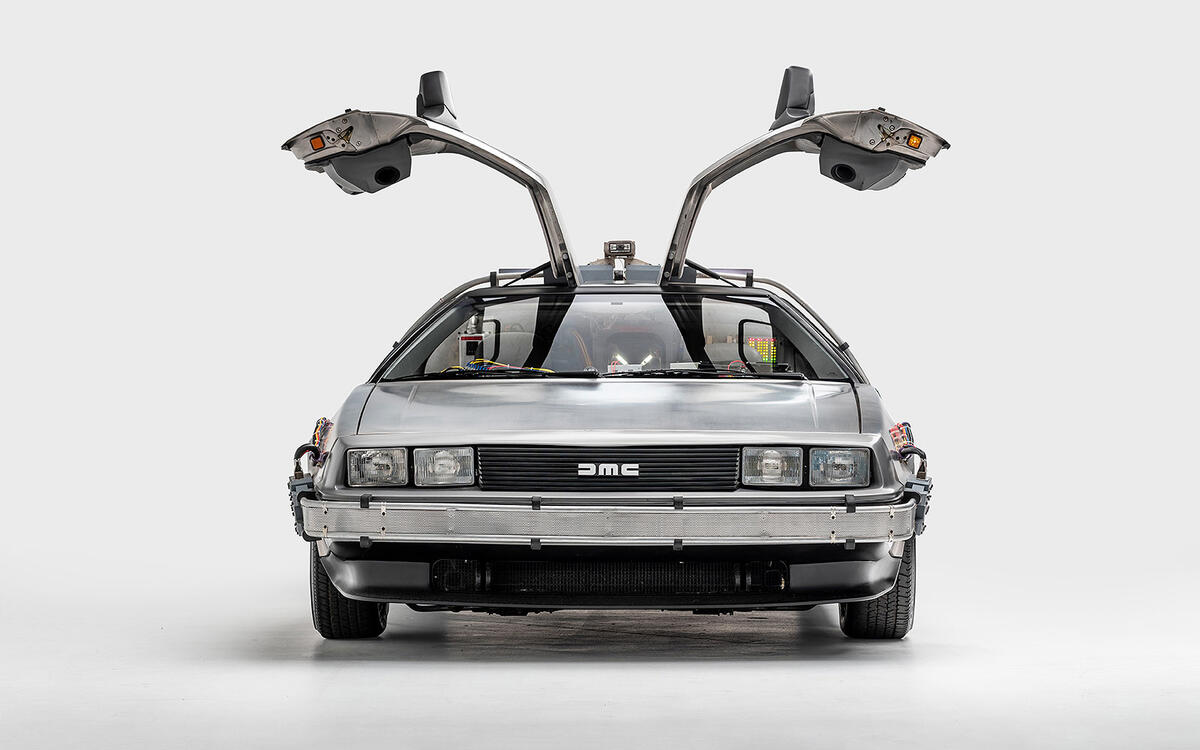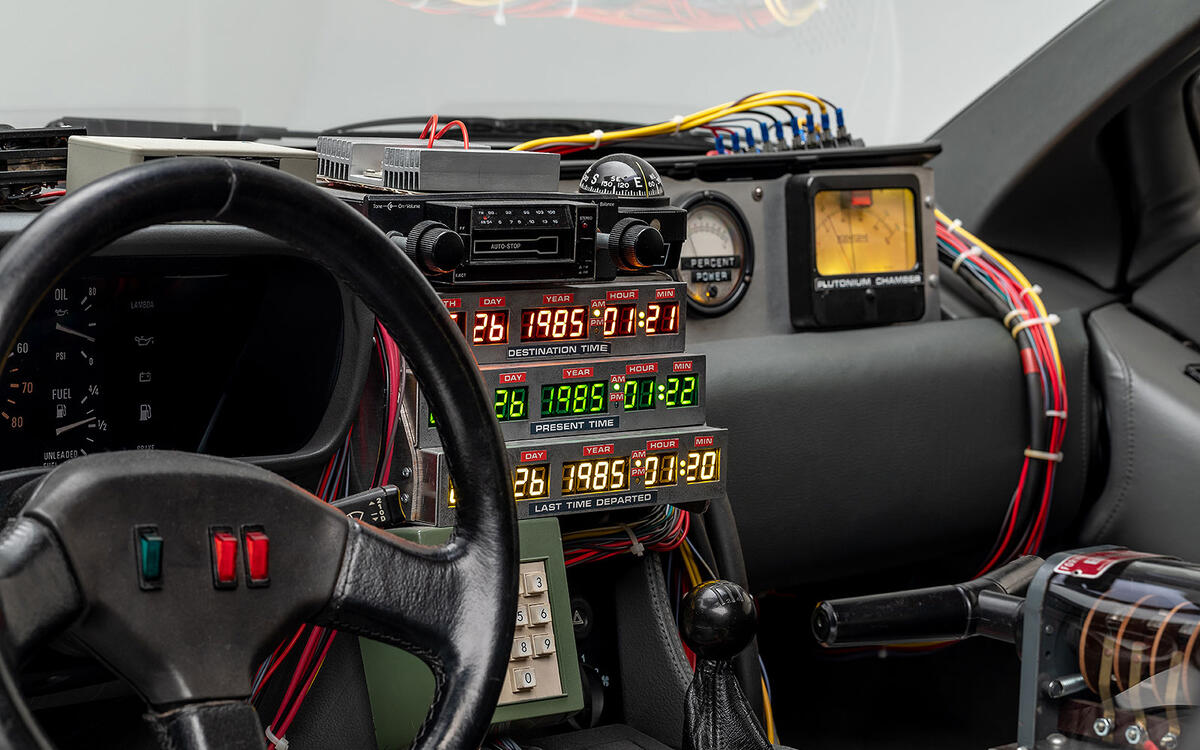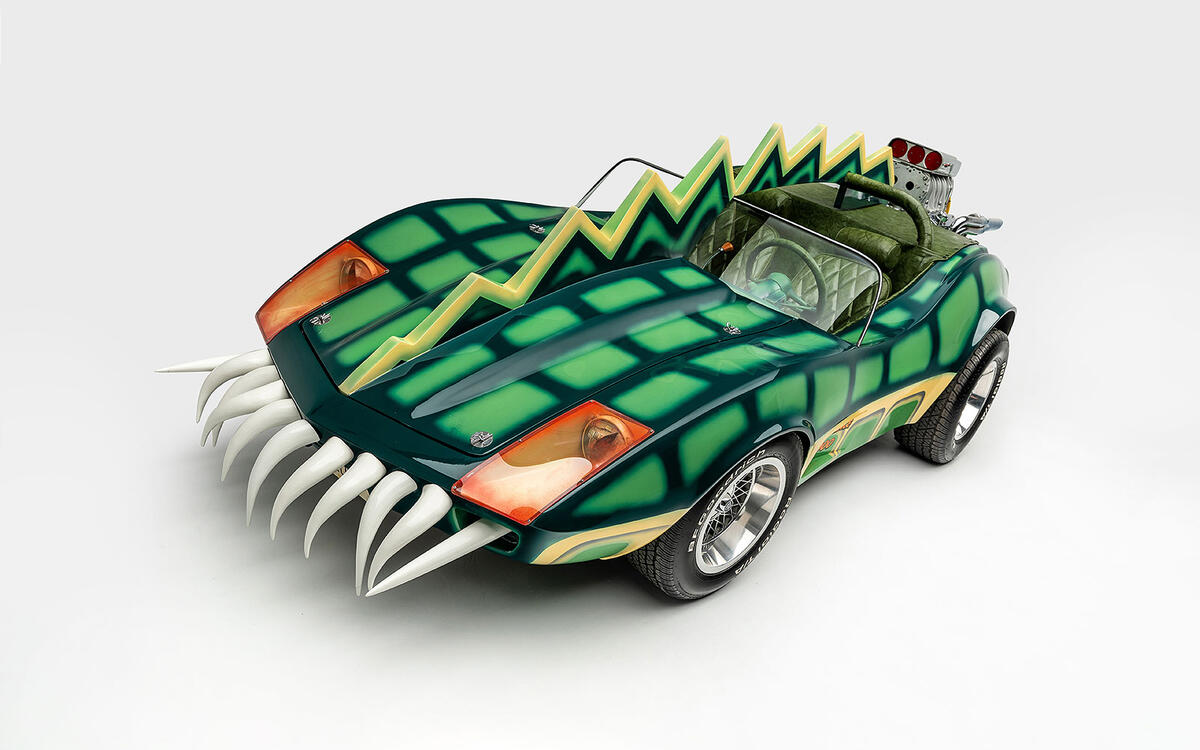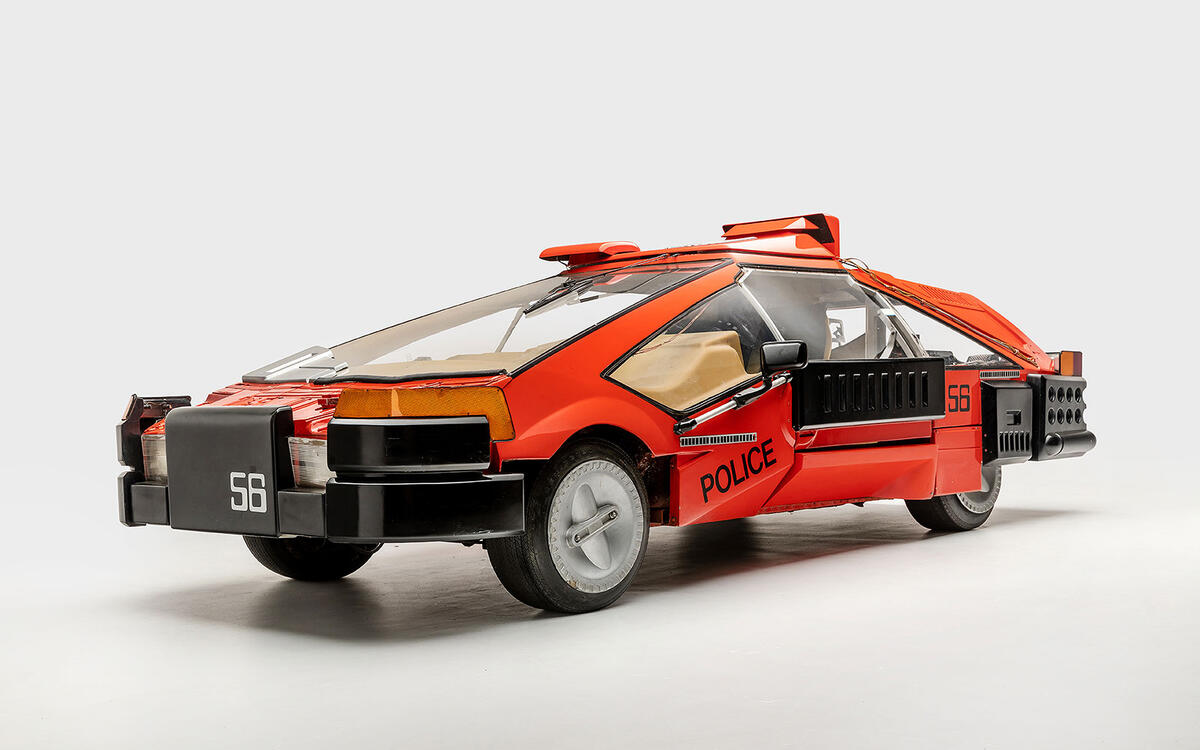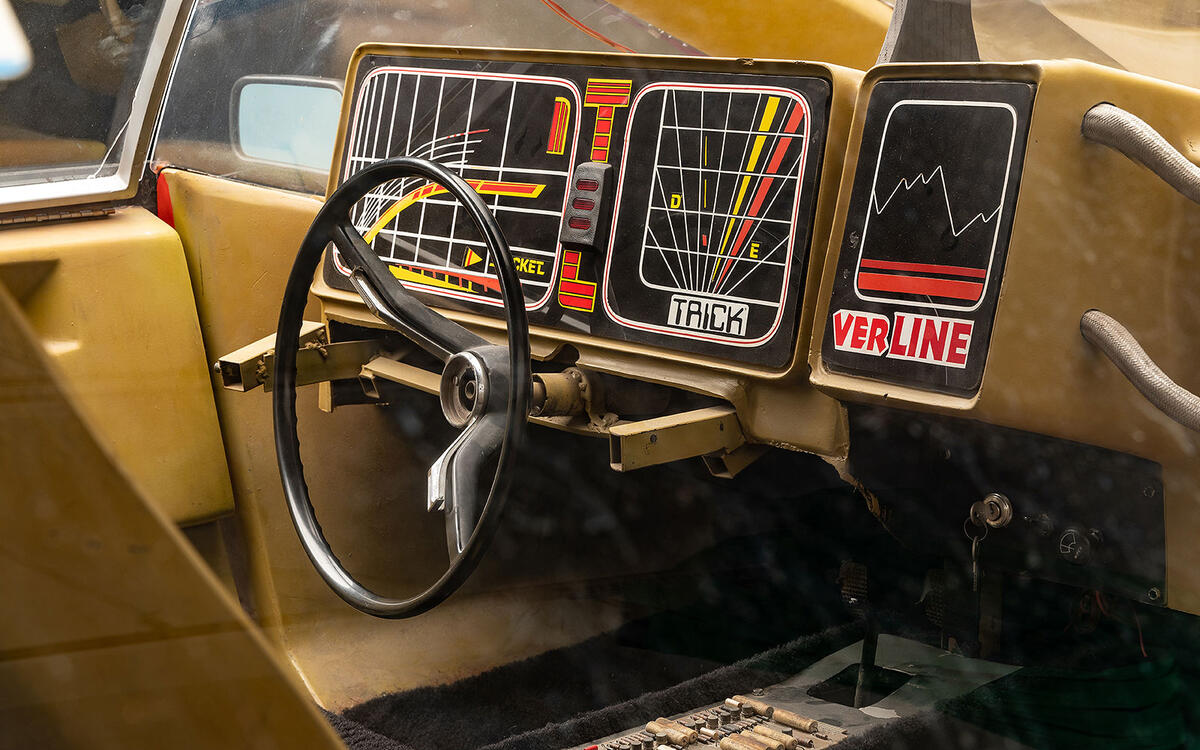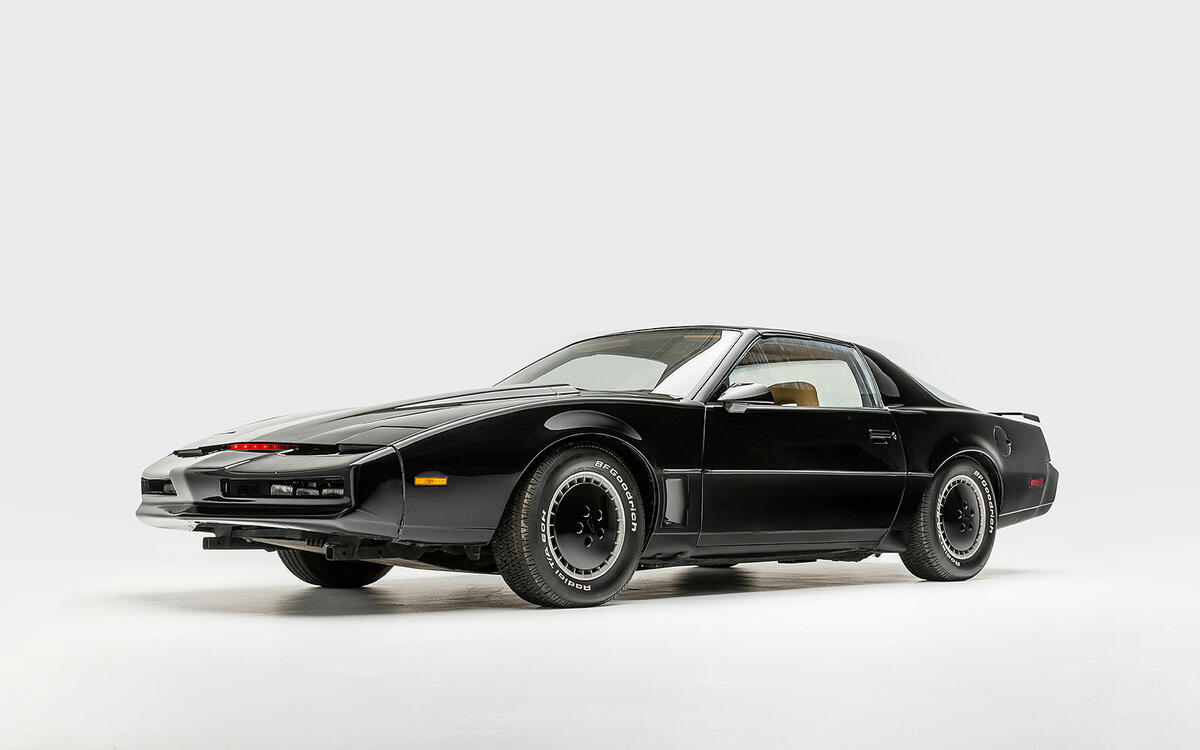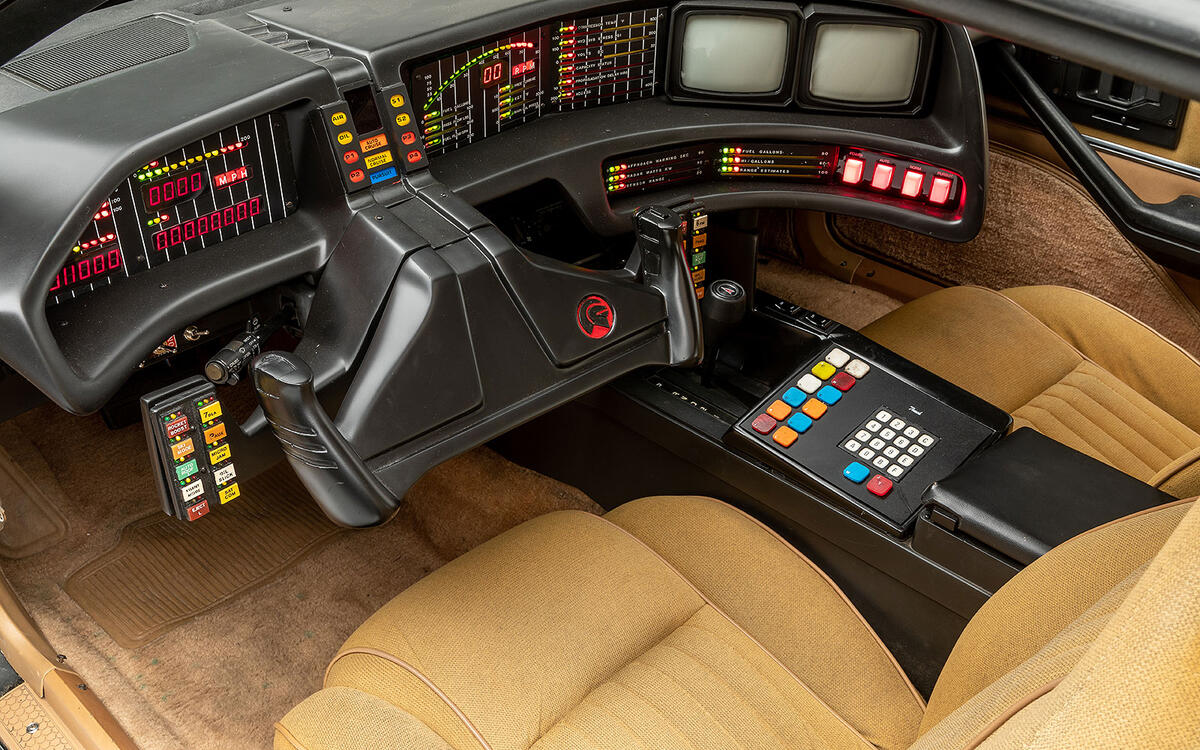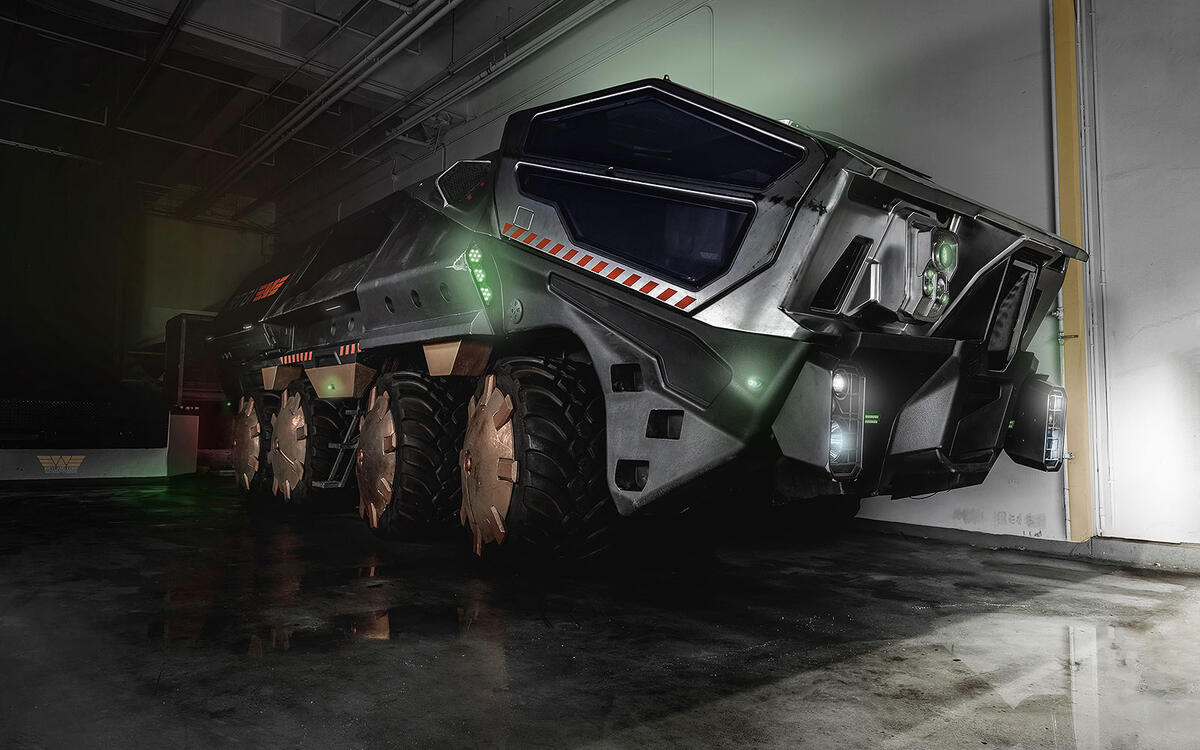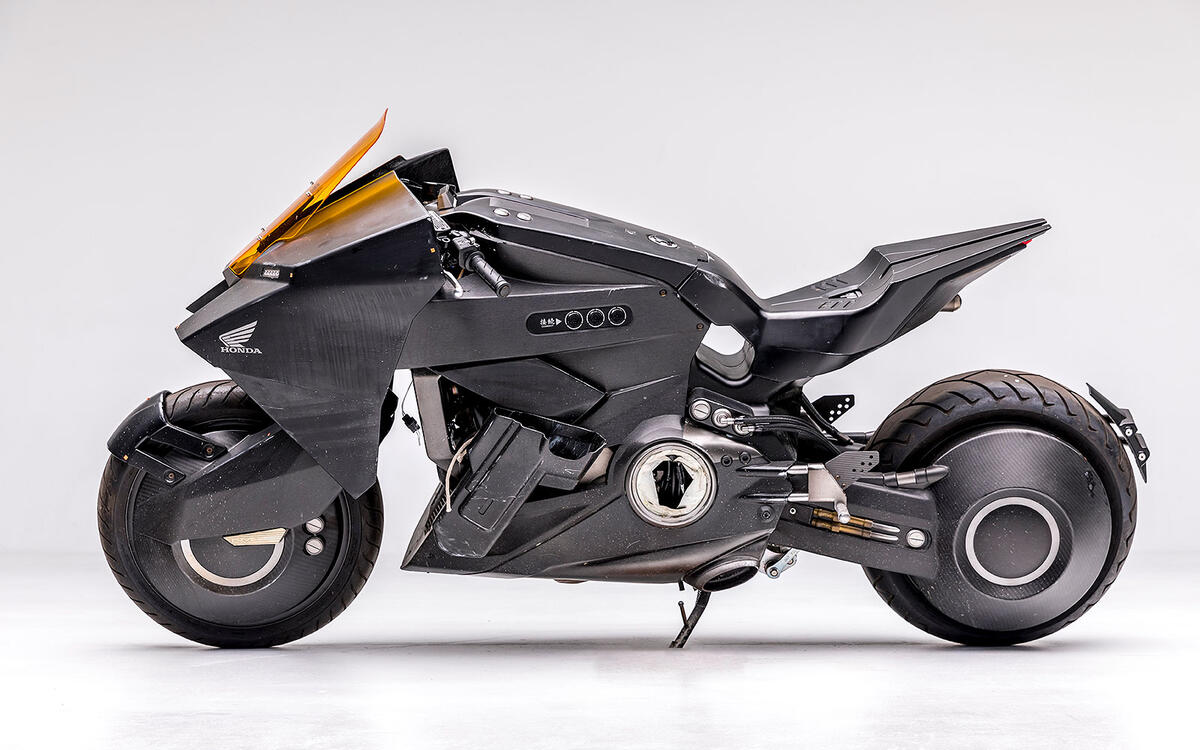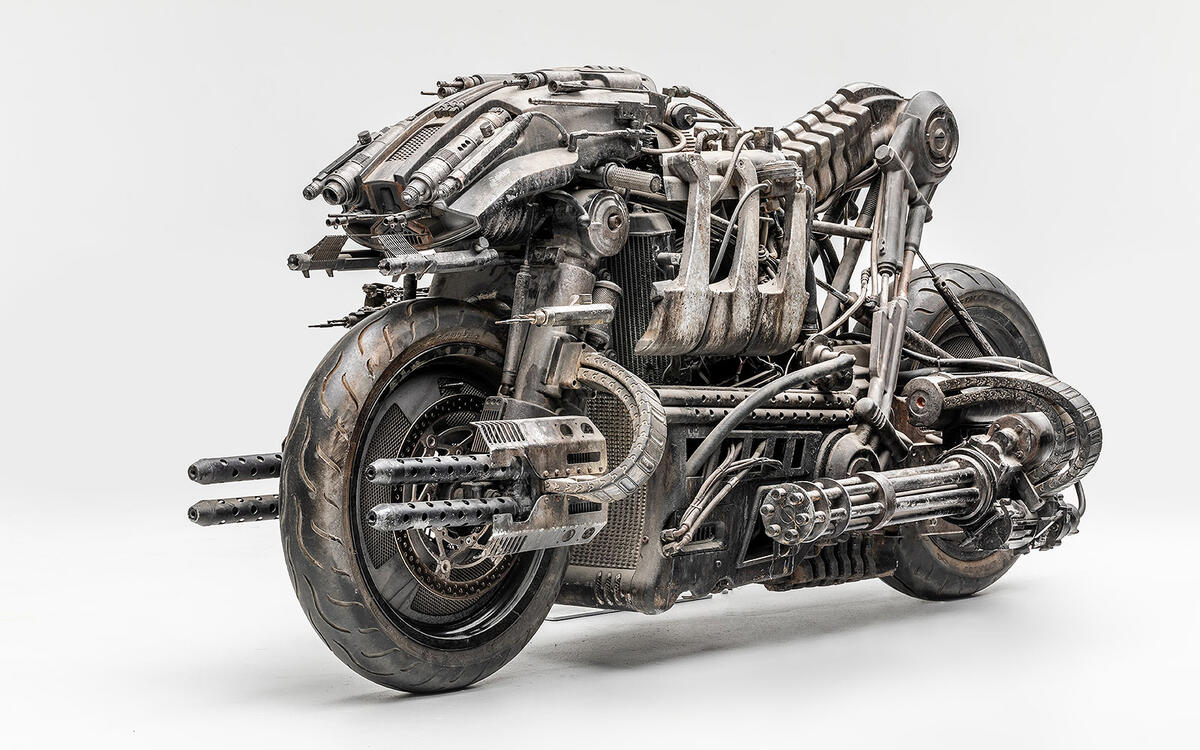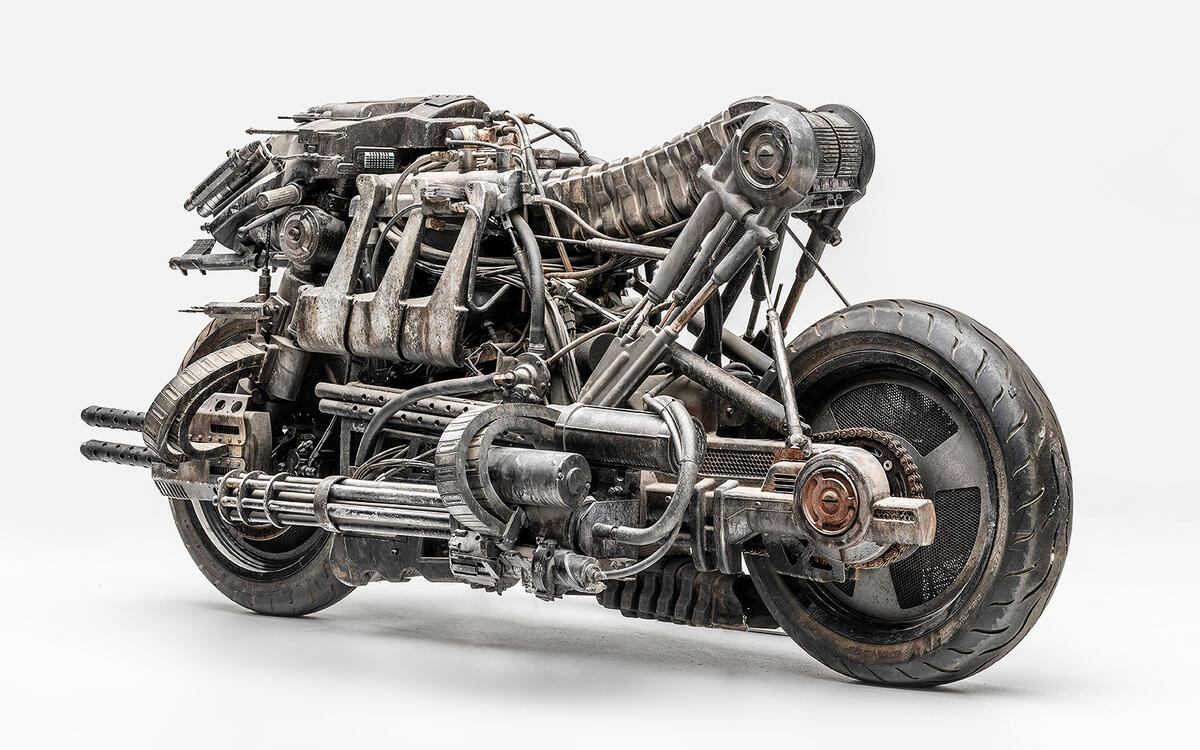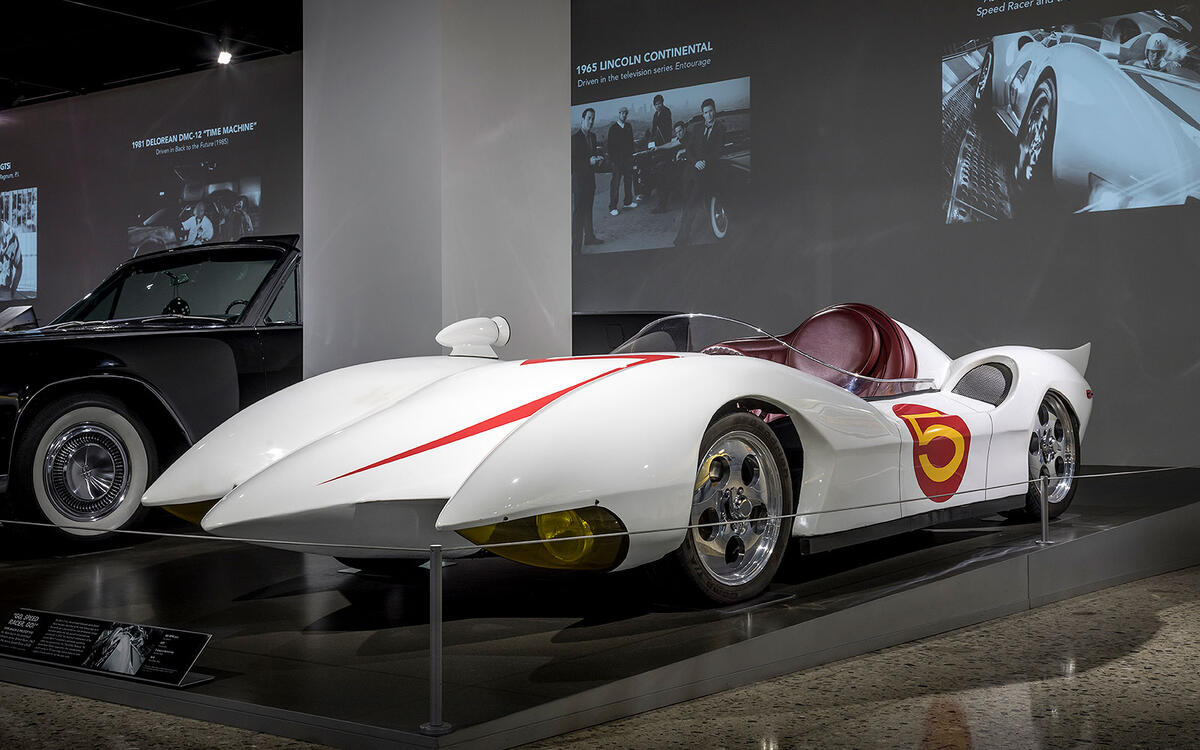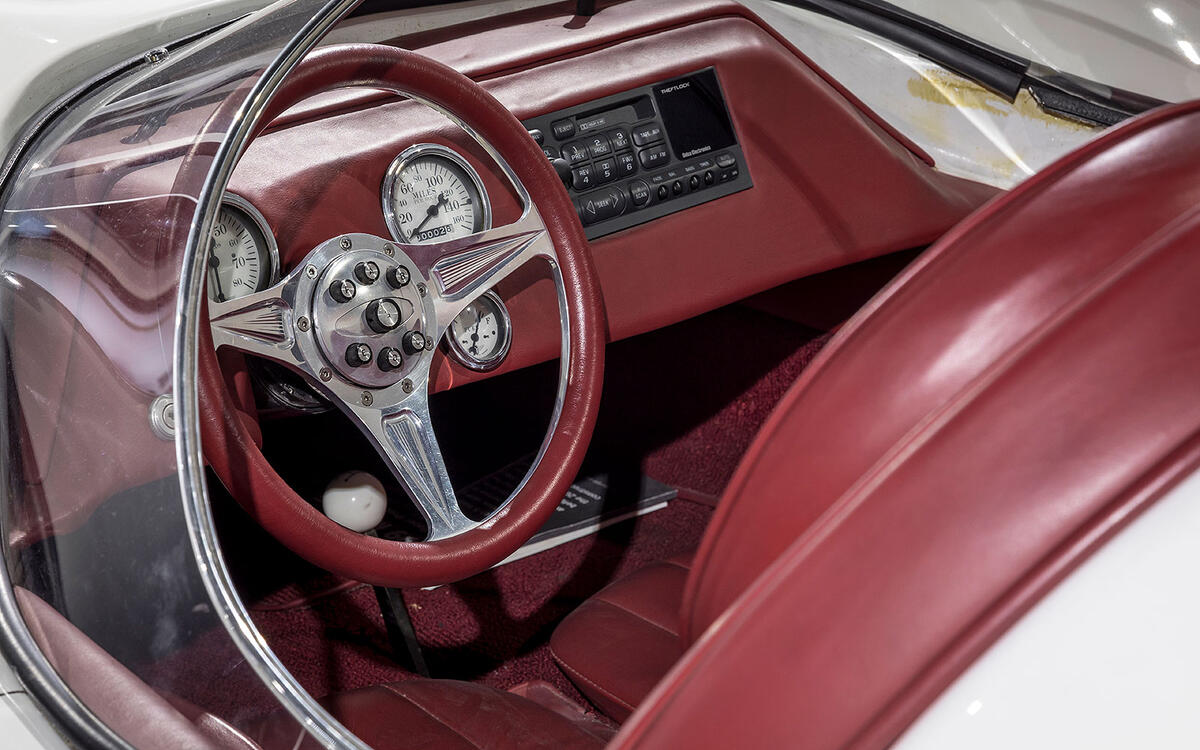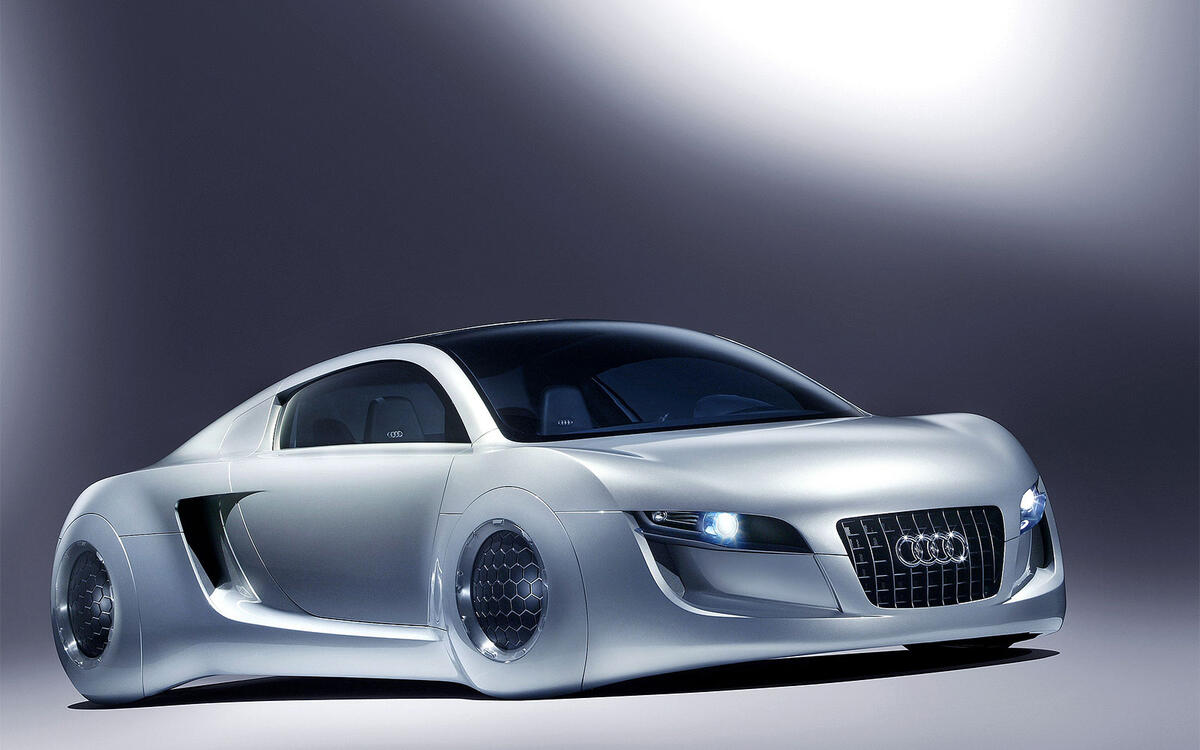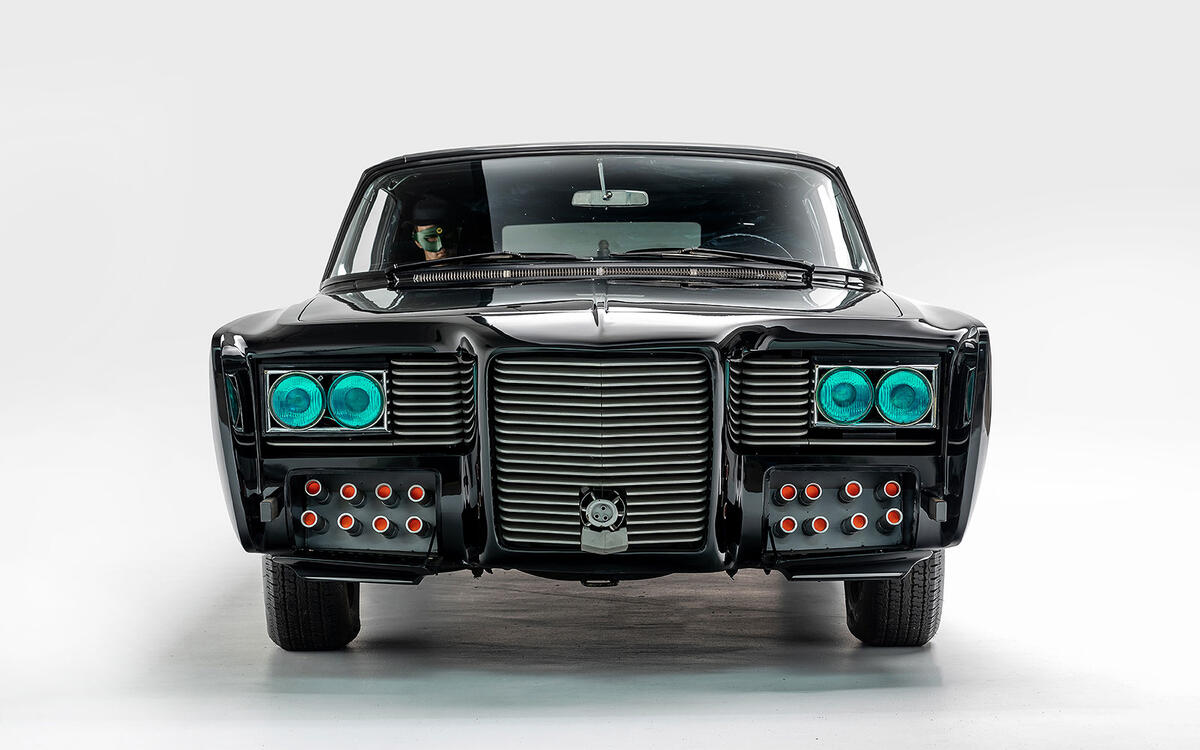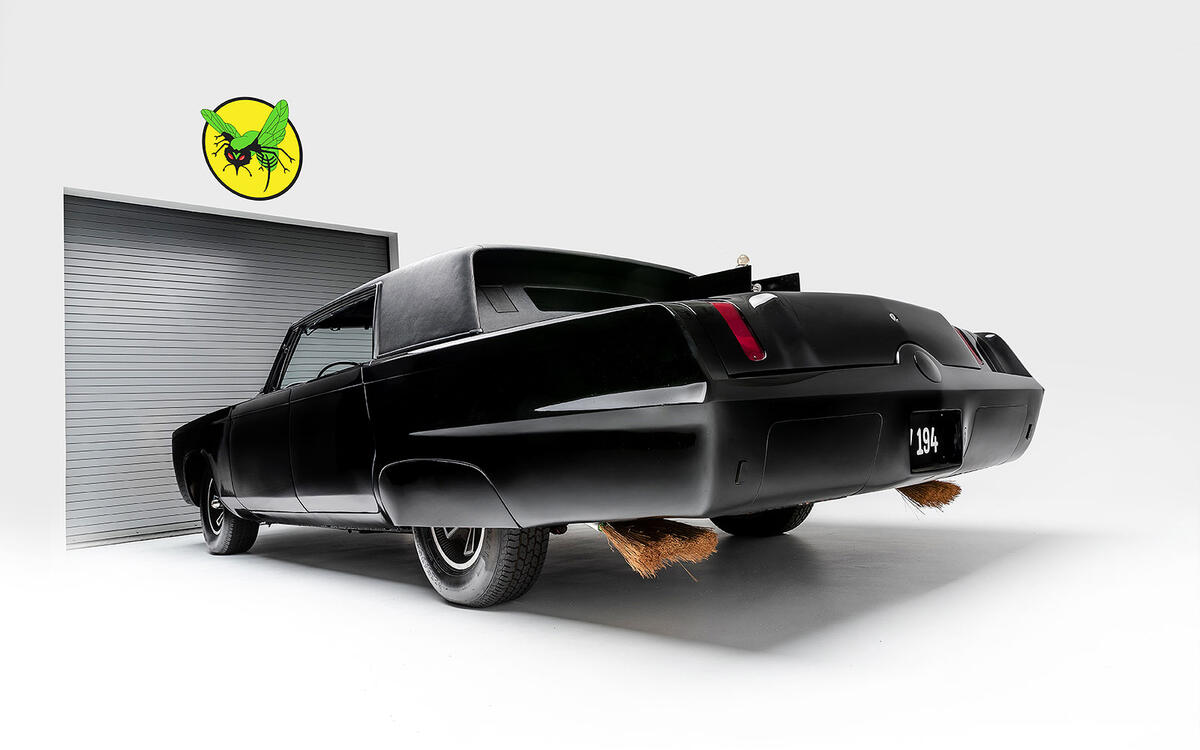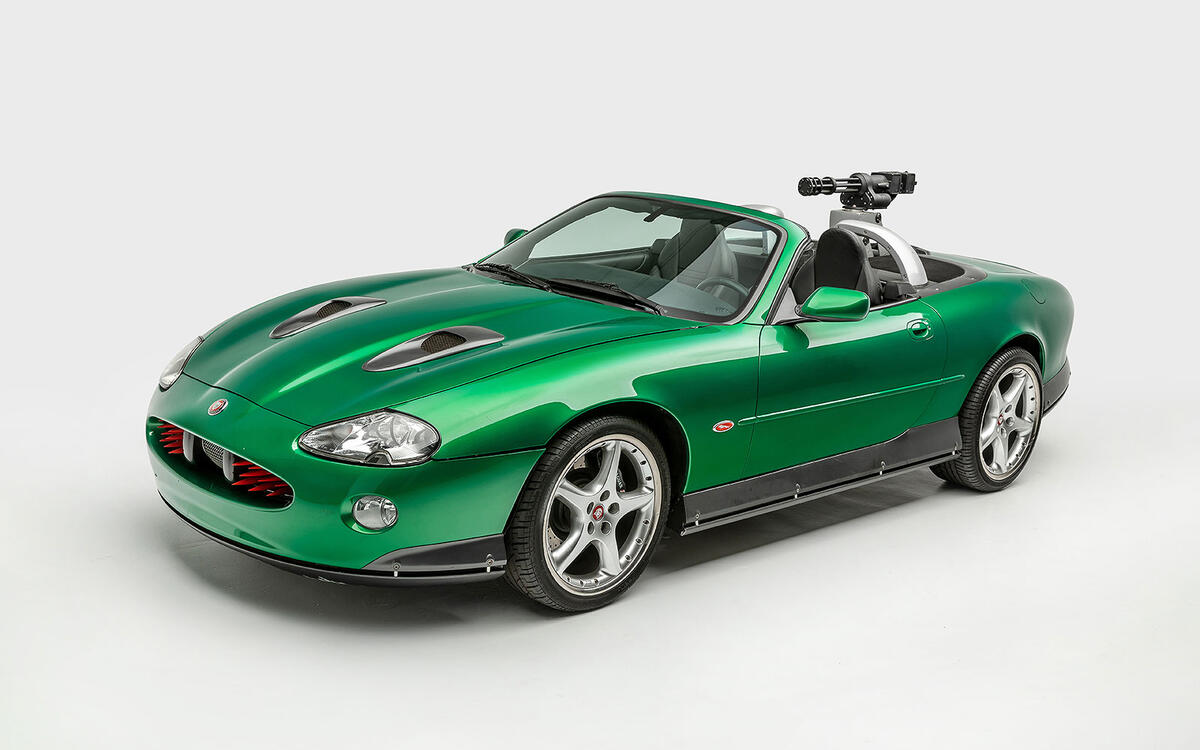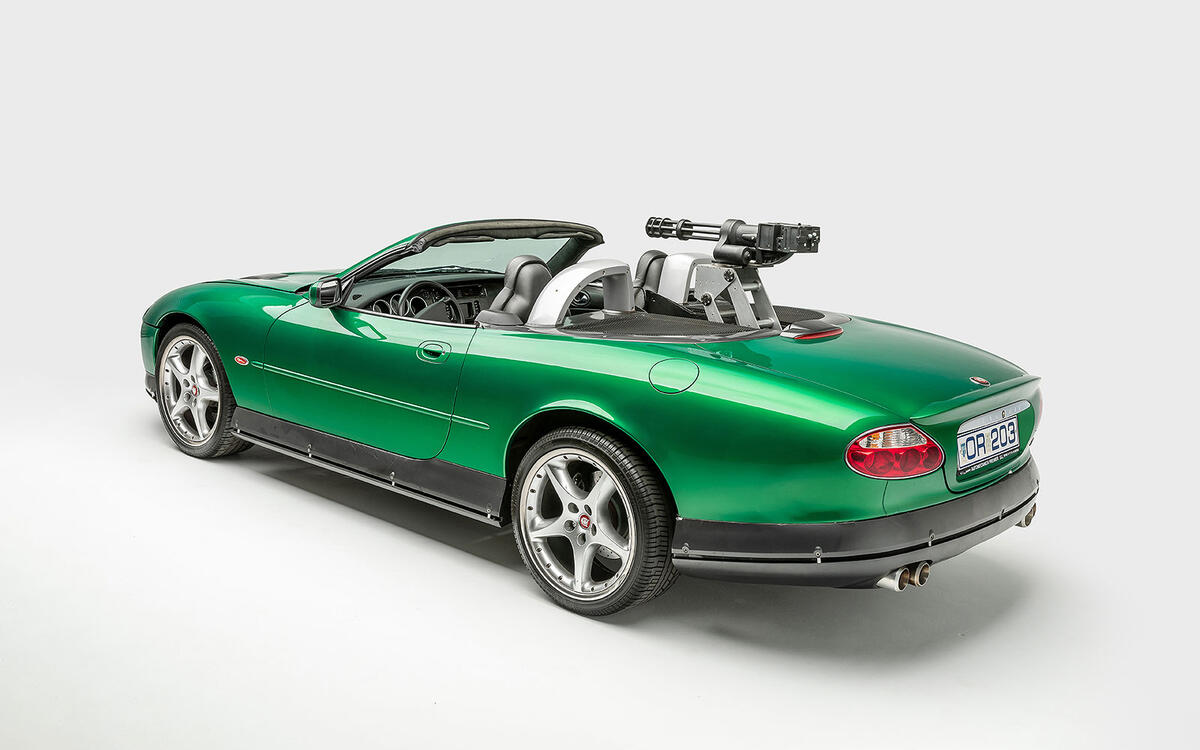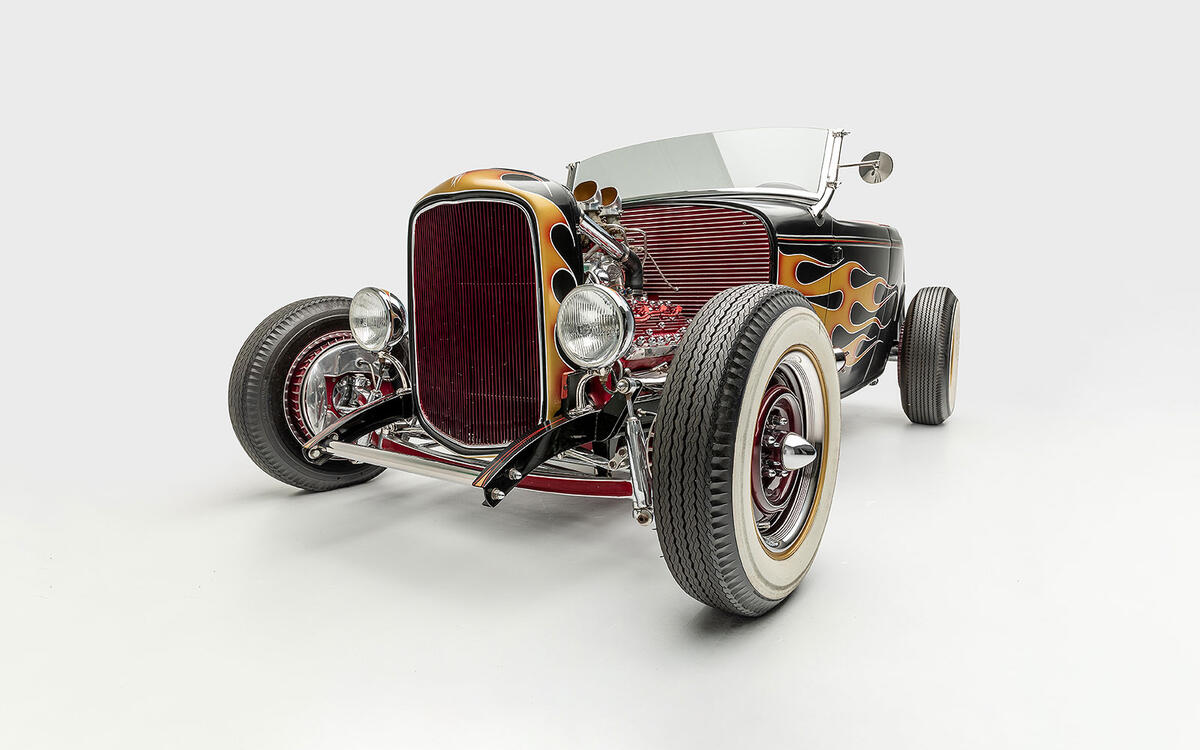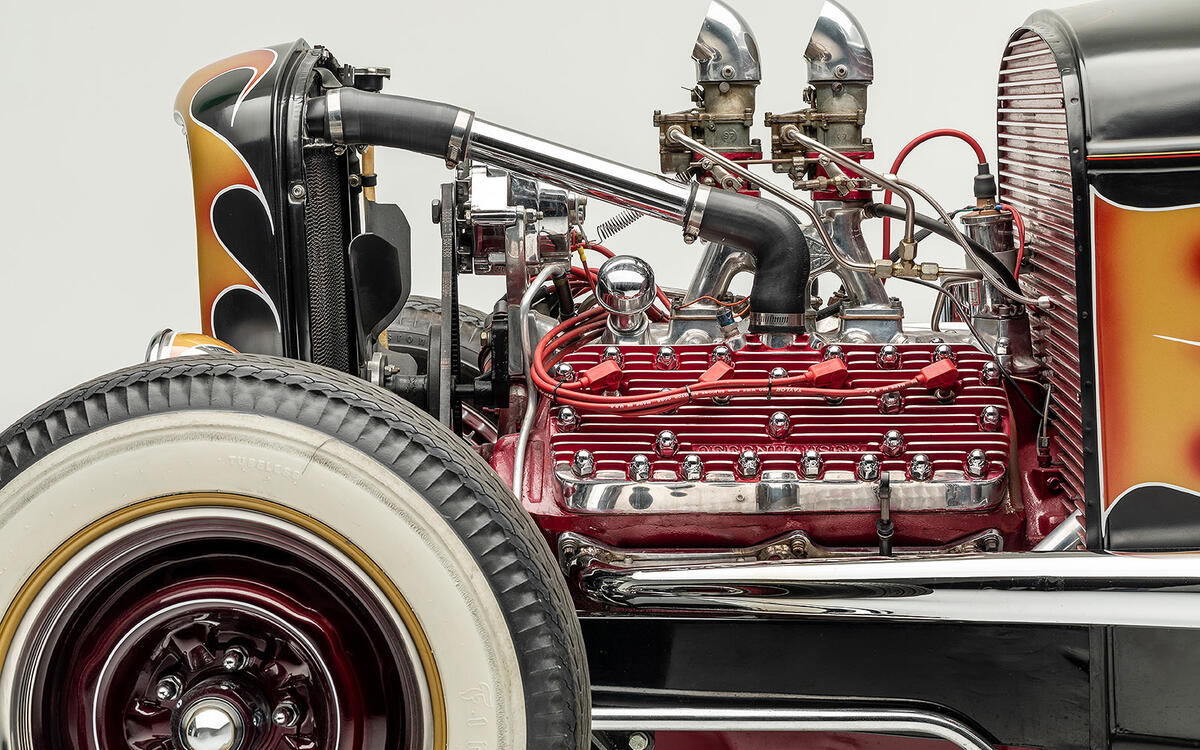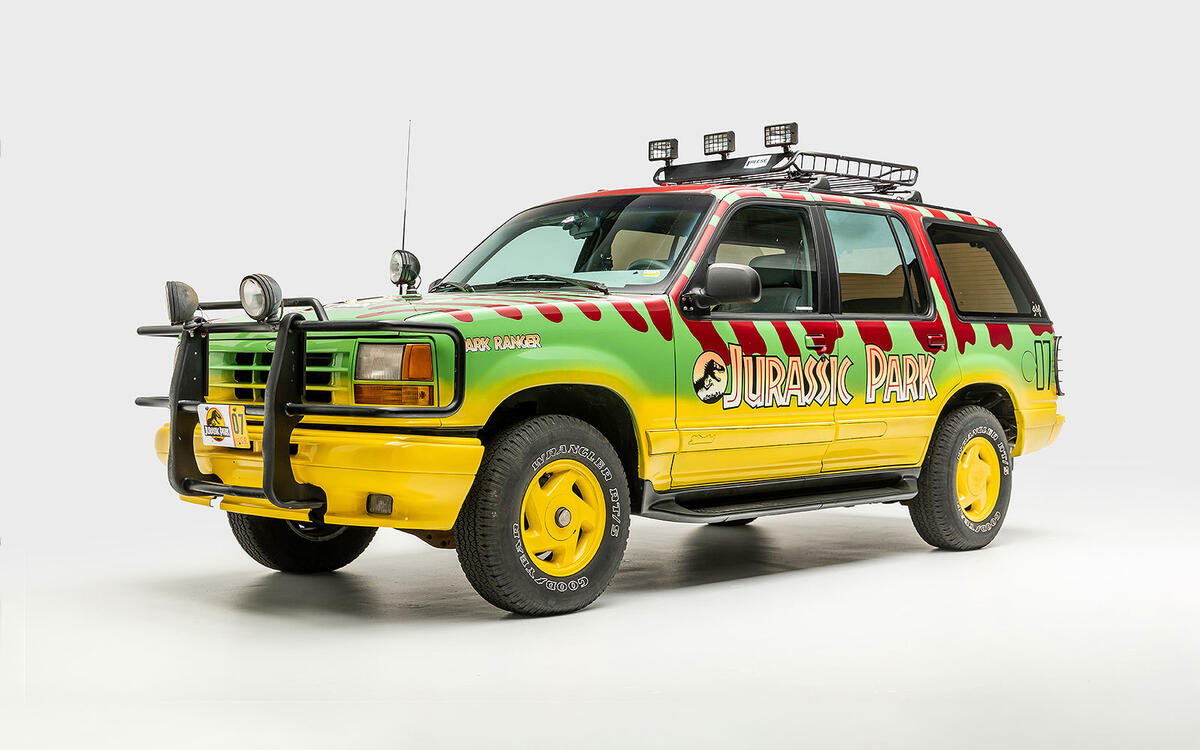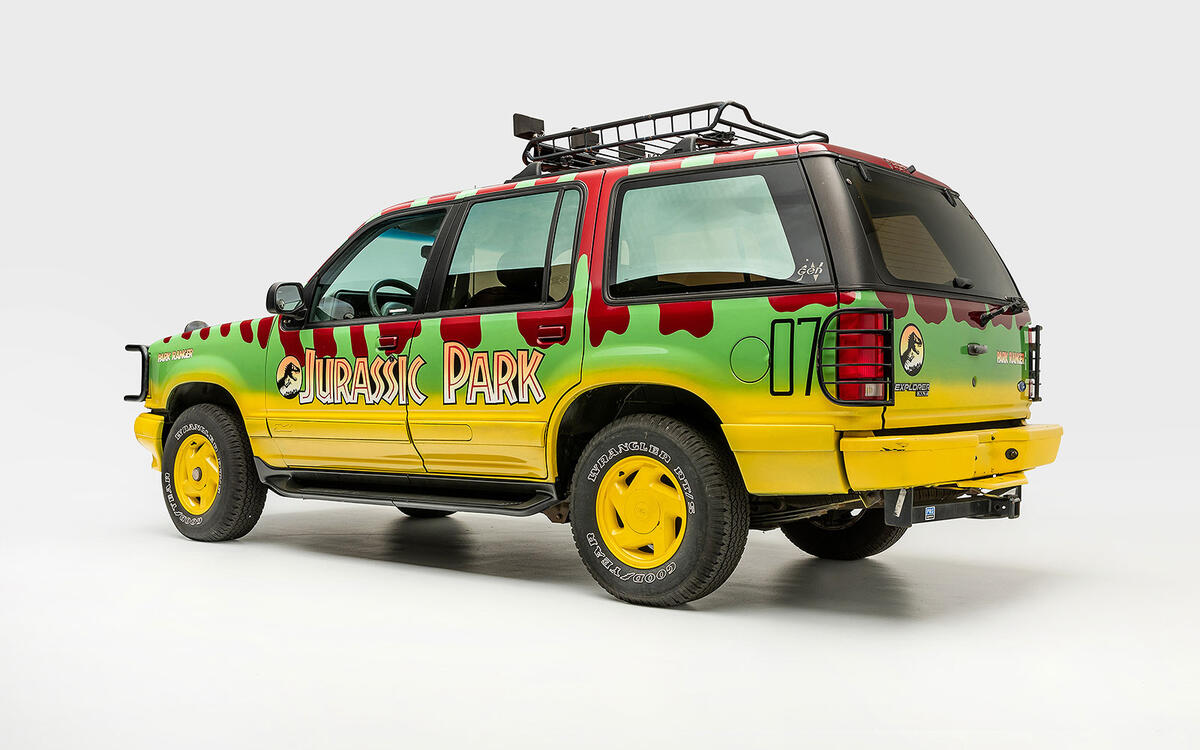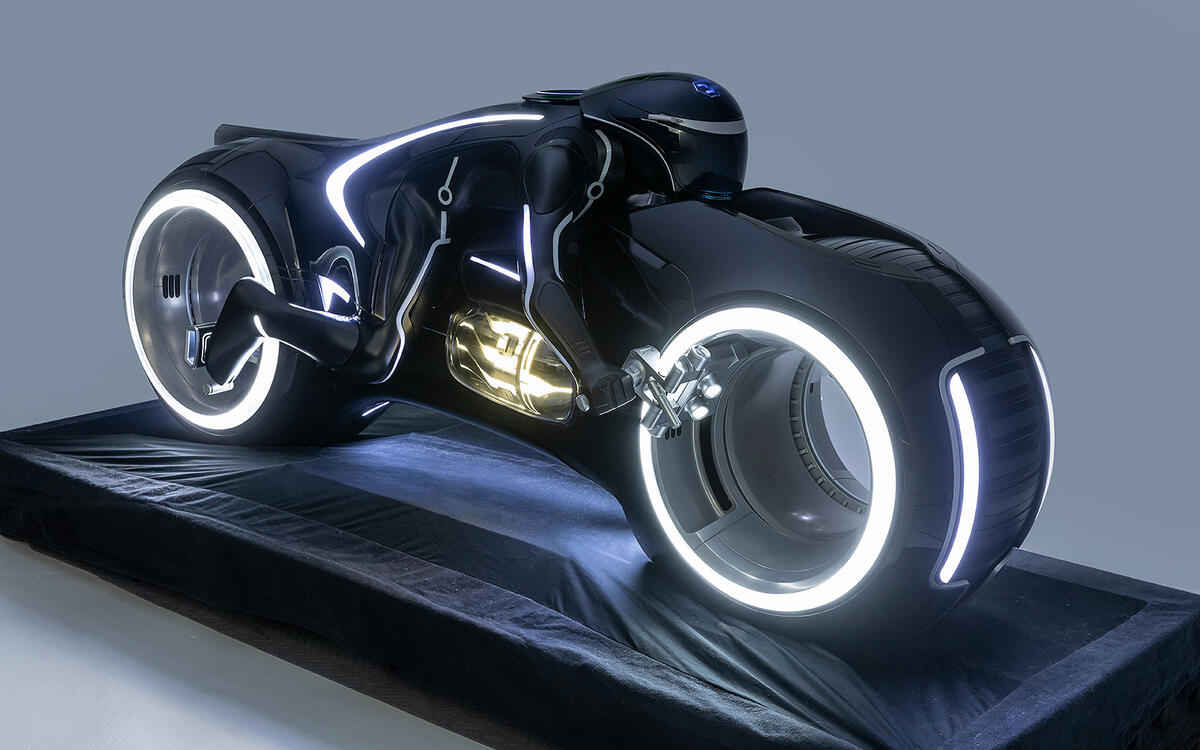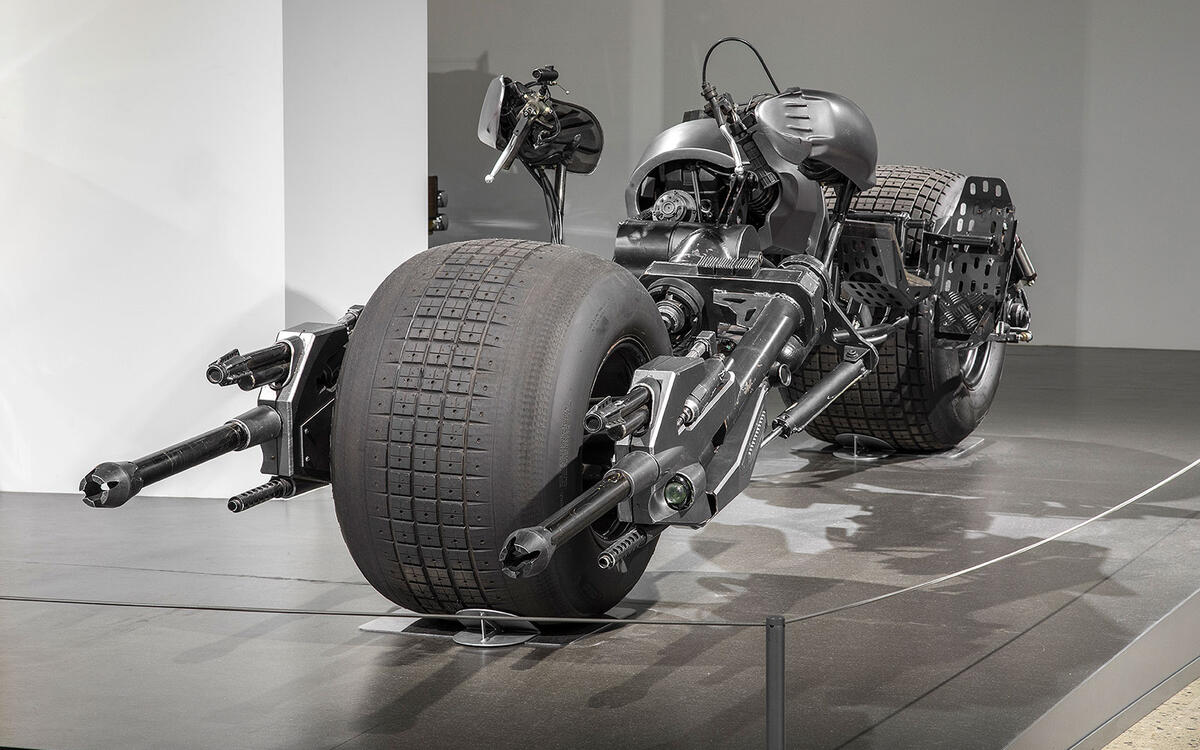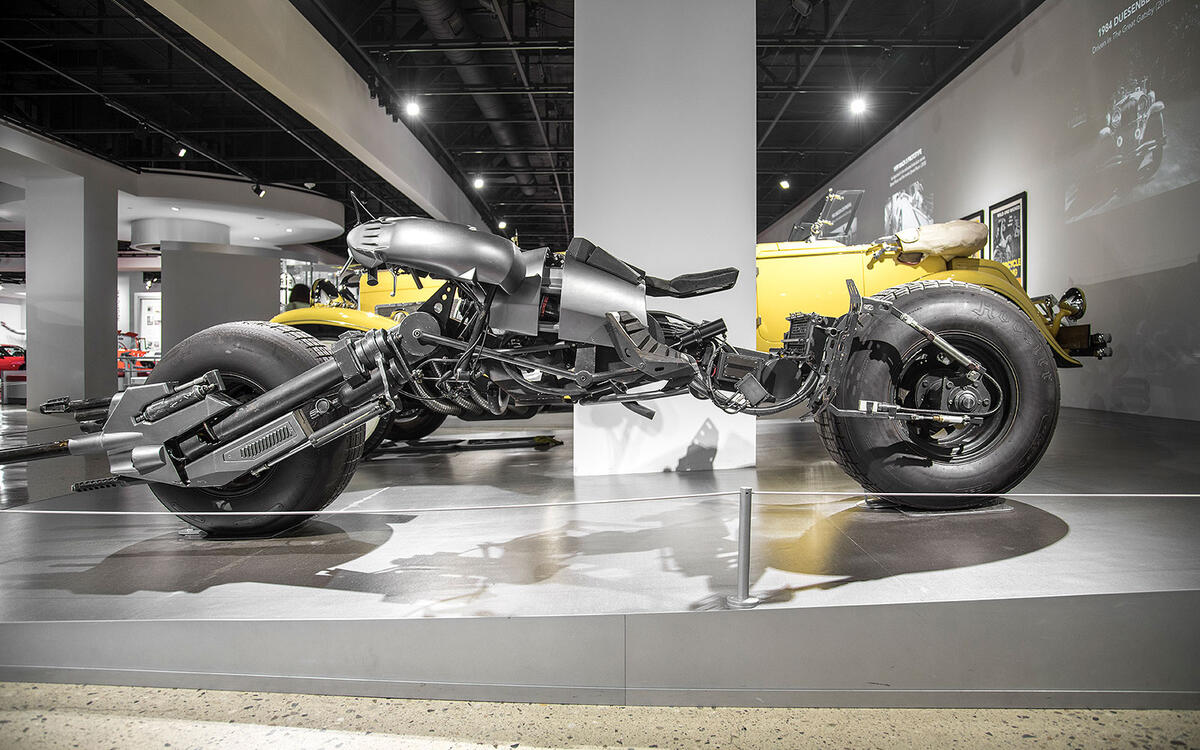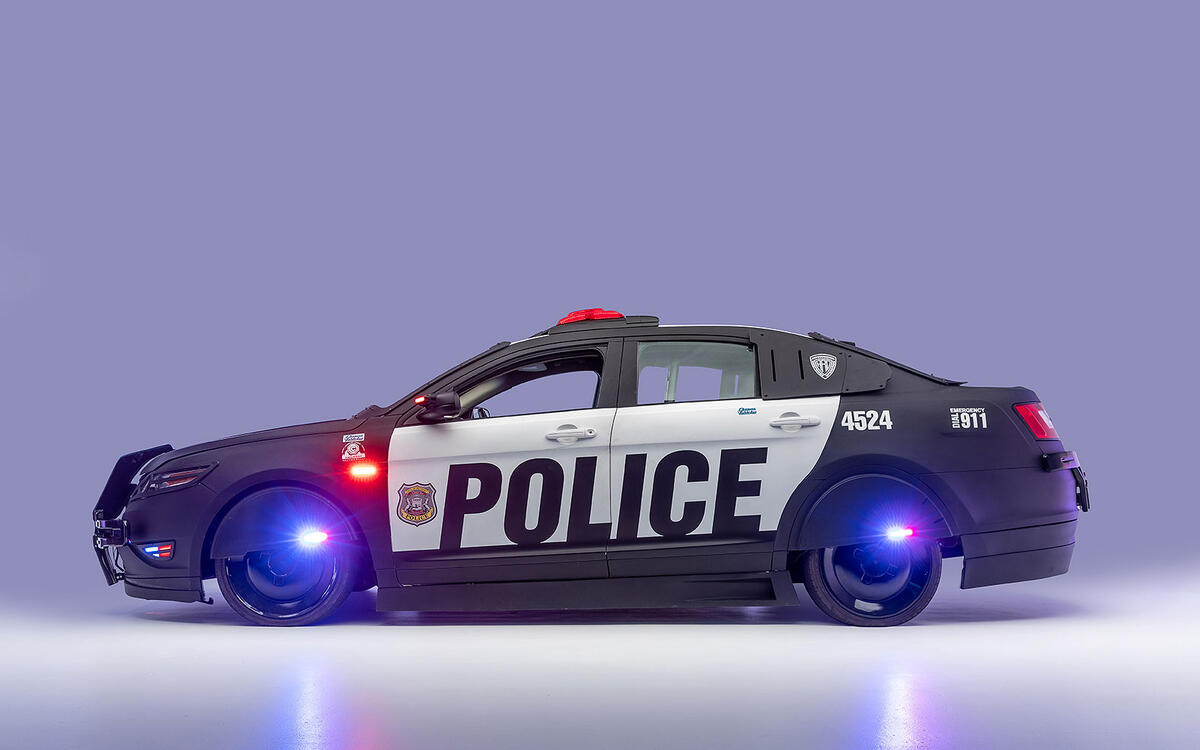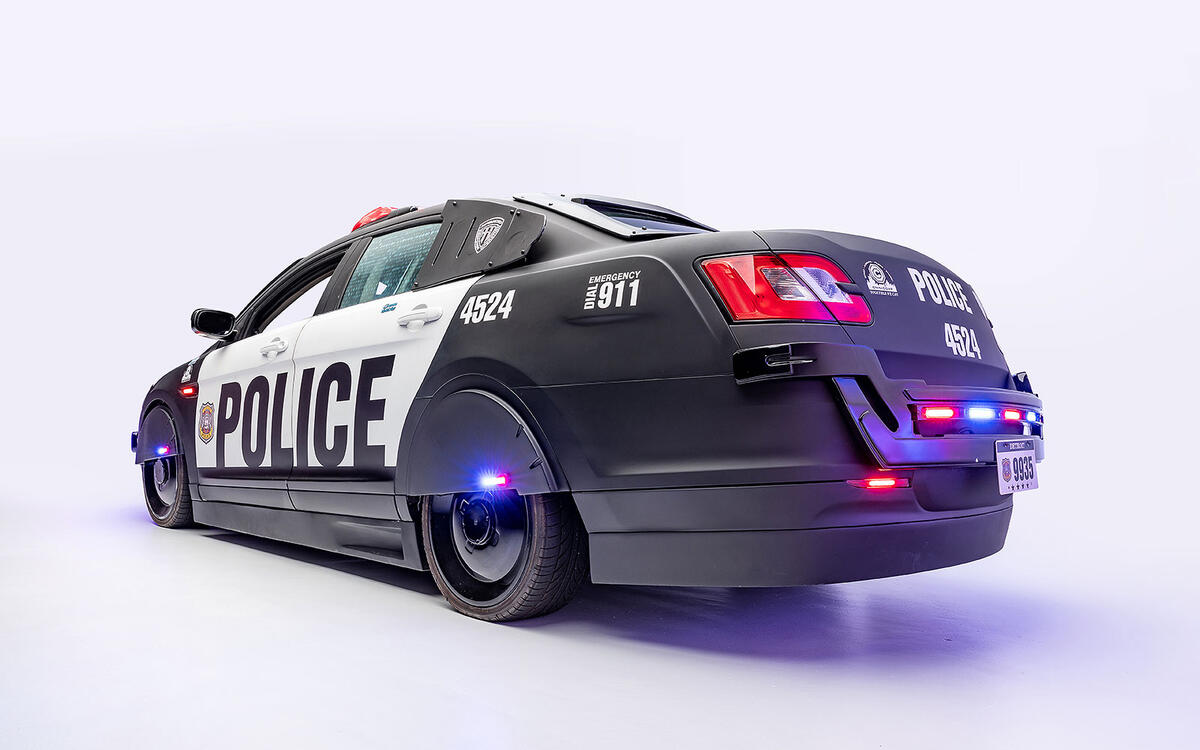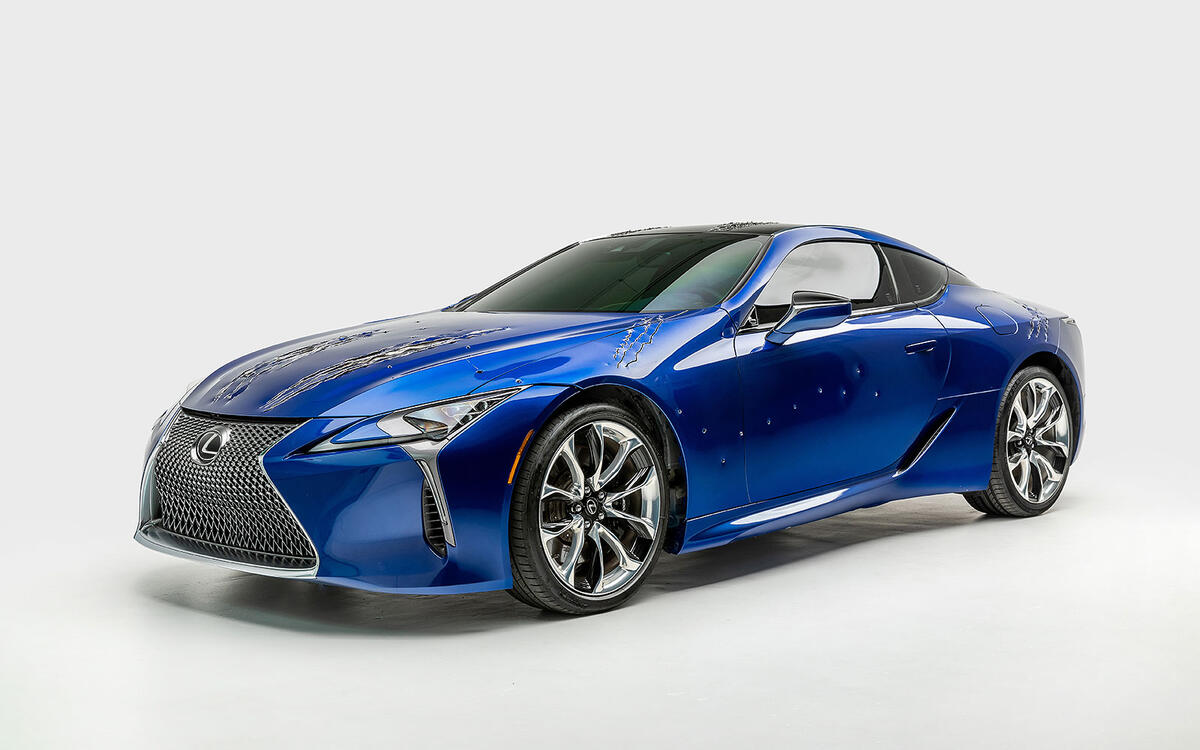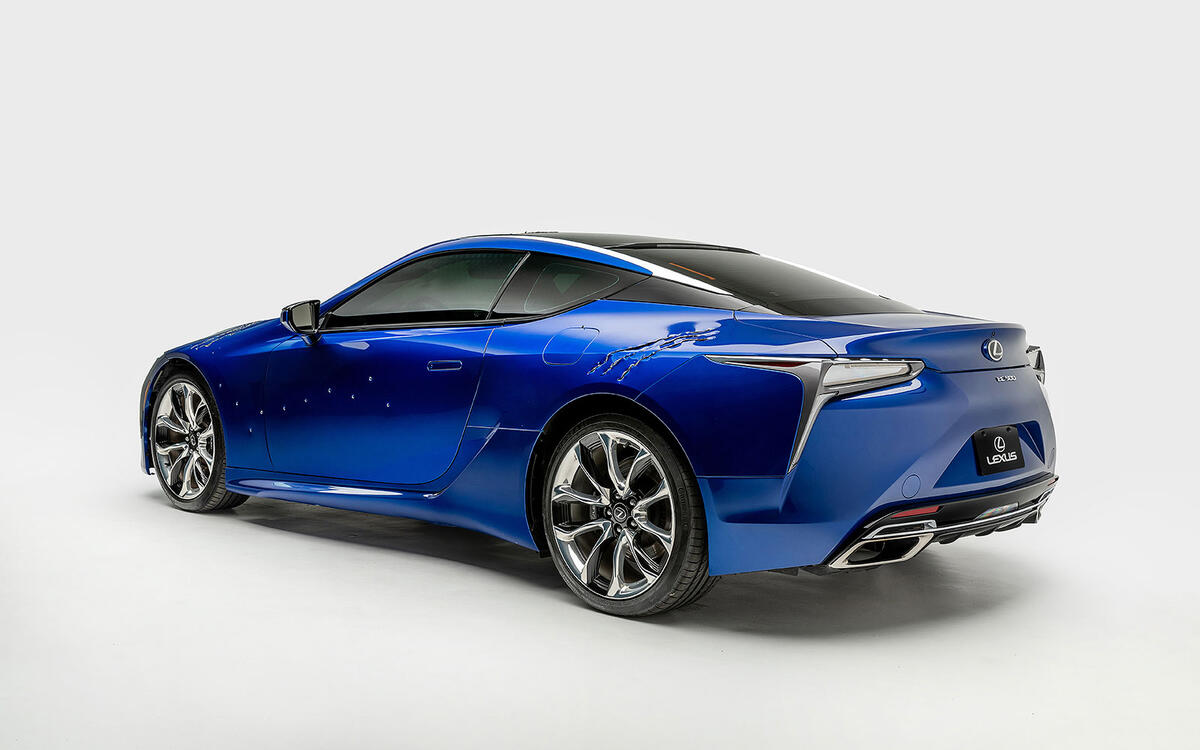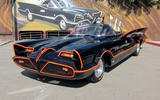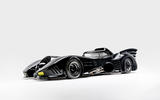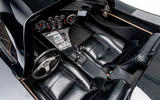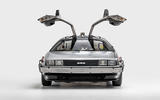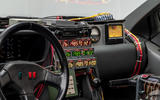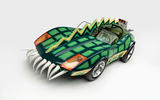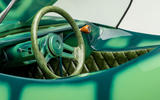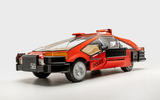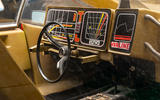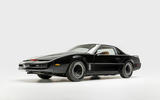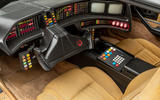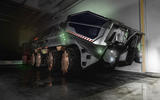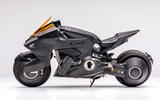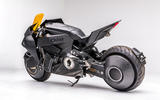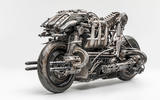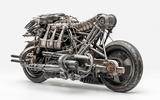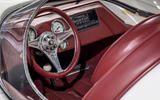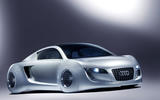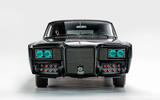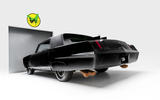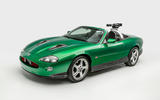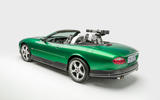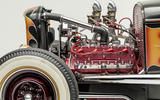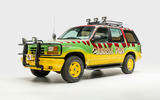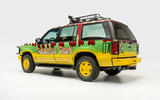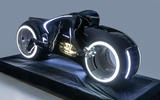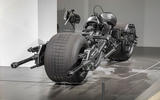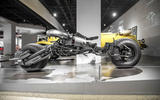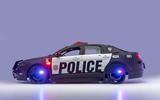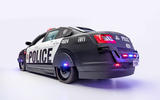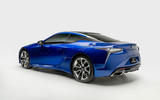 Slide of
Slide of
When it comes to predicting the future of transportation, Hollywood studios have often made the wildest ideas proposed by automakers and tech companies look completely mundane.
Hollywood’s collective imagination has spawned cars that fly, swim, travel at neck-snapping speeds, talk, think and are often smarter than the people that drive them. And, when it comes to movies or television series, cars are rarely just pieces of metals on four wheels. They’re carefully matched to the character that drives them and they sometimes play a starring role.
With the help of Audi and Microsoft, the Petersen Automotive Museum in Los Angeles has put together a temporary exhibit of famous cars called Hollywood Dream Machines that have starred in popular science fiction movies like Back to the Future and Blade Runner. It includes over 40 cars plus various props and costumes. And, because it’s in Los Angeles, you may even catch a glimpse of an actor checking out his or her former ride.
The exhibition opens its doors to the public on Sunday May 5. Adult tickets cost $16. To whet your appetite, we’re taking a closer look at the more emblematic cars featured in it.
 Slide of
Slide of
Batmobile (1966)
Los Angeles-based car customiser George Barris recycled the Ghia-built 1955 Lincoln Futura concept to create the Batmobile that starred in the 1966 Batman TV show and spin-off movie. Working on a tight, three-week deadline, Barris and his team gave the concept a new design while retaining key styling elements like the double-bubble windshield and the giant fins. Its rear end notably received a trio of exhaust tips pointed at the sky, a turbine-like outlet and a pair of parachutes.
Power didn’t come from a turbine, however; the Batmobile received a V8 engine and an automatic transmission sourced from a Ford Galaxie when its original Lincoln drivetrain proved too problematic to reliably use during filming.
Barris leased the Batmobile to Batman producers 20th Century Fox and Greenway Productions and owned it until he sold it for US$4.2 million in 2013. It’s owned by a collector named Dr. David Anderson whose collection also includes the second Barris-built Batmobile.
 Slide of
Slide of
Batmobile (1989)
Tim Burton’s 1989 Warner Bros. Batman movie starred a much more modern and streamlined take on the original, George Barris-designed Batmobile from 1966. It was powered by a Chevrolet-sourced V8 engine and built on a pair of Impala frames that were fused together. The body was designed by Fireball Tim Lawrence and Julian Caldow and entirely custom-made.
 Slide of
Slide of
Batmobile (1989)
From behind the wheel, Batman could push buttons on the centre console to shoot bombs at bad guys, take down enemies using a pair of M1919 Browning machine guns integrated into the body, fire Batdiscs and launch a grappling hook to make impossibly sharp turns without slowing down.
This version of the Batmobile also starred in the 1992 movie Batman Returns. Historians disagree on how many examples of the 1989 Batmobile were made; the final figure is two or five depending on who you ask. What is certain is that one resides in the Petersen Museum’s collection while another is owned by Batman's producer, Jon Peters.
 Slide of
Slide of
DeLorean Time Machine (1985)
If it hadn’t starred in the Universal Studios-produced Back to the Future trilogy, the ill-fated DeLorean DMC-12 would have gone down in automotive history as yet another obscure coupe that completely missed the mark. Hollywood fame turned it into one of the most emblematic movie cars ever seen on the silver screen.
Designed by Ron Cobb and Andrew Probert, the DMC-12-based time machine runs on electricity generated by a plutonium-fueled nuclear reactor. When plutonium isn’t available, it’s possible to channel the power of a lightning bolt to zap the flux capacitator into action. This is all theoretical, of course; in reality, the DMC-12 uses the same PRV V6 engine as the regular-production model.
 Slide of
Slide of
DeLorean Time Machine (1985)
The DeLorean time machine allowed Doc Brown and Marty McFly to explore the past and the future in the 1985, 1989 and 1990 movies. Operating it was fairly straight-forward: the passengers needed to set the date they wanted to travel to using a clock mounted on the dashboard and accelerate until they reached 88mph. Technology took care of the rest – when the car ran, at least, which wasn't always the case.
The Petersen Automotive Museum owns one of the cars that starred in the trilogy. Another one is displayed in Paarl, a city in South Africa near Cape Town.
 Slide of
Slide of
The Alligator (1975)
Set in the year 2000, Death Race 2000 takes viewers to a distant future in which mercilessly hitting innocent pedestrians with a car is no longer a crime; it’s the national sport. To win, contestants go to great lengths to build the deadliest cars imaginable in order to score bonus points by mowing down bystanders as they race across America. The race's goal explains the fang-like protrusions fitted to the front of the Alligator, which is driven by an enigmatic character named Frankenstein.
 Slide of
Slide of
The Alligator (1975)
The Alligator was designed by James Powers. While it looks almost like a Chevrolet Corvette when viewed from certain angles, it’s built on a Volkswagen Beetle platform and powered by an air-cooled flat-six engine borrowed from the Chevy Corvair. The Beetle-sourced speedometer embedded into the dashboard betrays its origins but it otherwise takes a well-trained eye to identify its German roots.
The example in the Petersen’s Hollywood exhibit is a replica of the car used in Death Race 2000. The car that starred in the movie was sold in 2015 for an unspecified amount of money and resides in a private collection.
 Slide of
Slide of
Deckard’s Sedan (1982)
Police officer Rick Deckard’s Sedan is one of the cars Syd Mead designed specifically for the 1982 science-fiction movie Blade Runner. The film takes place in Los Angeles in 2019 so the Sedan – which can drive and fly – illustrates how the producers pictured the car of the future during the early 1980s. Luckily, automakers haven’t released anything as remotely spaceship-like as Deckard’s police cruiser.
 Slide of
Slide of
Deckard’s Sedan (1982)
Deckard’s Sedan uses very few parts from regular-production models. One of the notable exceptions is the two-spoke steering wheel which comes from a 1960s Volkswagen Beetle. It’s missing its centre cap, which should have a logo shaped like the Wolfsburg castle.
The car is normally displayed in the American Police Hall of Fame in Titusville, Florida. It’s lucky to be alive; most of the cars that starred in Blade Runner were destroyed when the producers finished filming.
 Slide of
Slide of
Knight Industries Two Thousand (1982)
Designed by Michael Scheffe, the Knight Industries Two Thousand (KITT) stands out as one of the few cars significant enough to have its own role in a movie or a television series. It started life as a 1982 Pontiac Firebird Trans Am and it still looks like one from the outside but artificial intelligence enables it to communicate with humans and protect their lives. Actor William Daniels (born 1927) gave KITT the power of speech by recording its lines in the series.
 Slide of
Slide of
Knight Industries Two Thousand (1982)
KITT’s brain is a fictional Knight 2000 microprocessor that gives it the ability to think, speak and learn. It’s equipped with a parachute, a flame thrower, a grappling hook and an infrared tracking scope. It can also send its powertrain into silent mode to sneak past enemies. And while it looks like almost like a regular Firebird when viewed from the outside, its interior is upgraded with dozens of buttons, a rim-less steering wheel and several digital gauges. The Pontiac emblem on the shift lever remains, oddly, though it's upside down.
Universal Pictures built approximately 20 stunt cars but destroyed most of them. Only five are accounted for as of 2019, including one that spent years as a visitor attraction at Universal Studios. Most are in private collections or in museums across America.
 Slide of
Slide of
Weyland RT (2012)
The Weyland RT was designed to tackle the most hostile environments in the entire galaxy. It’s an eight-wheeled monster capable of carrying up to 20 people and their gear plus a full load of scientific equipment used by researchers to learn about their surroundings. In other words, it's the perfect vehicle for exploring new planets.
In Ridley Scott’s movie Prometheus, which takes place in the year 2094, the RT is powered by a ceramic gas turbine. In reality, it’s built on the chassis of a Tatra 813 truck developed for the Czech military. Three examples were made and one of them is on display in the Coventry Transport Museum in England.
 Slide of
Slide of
Honda Custom Motorcycle (2017)
Honda’s motorcycle-building division helped New Zealand-based Human Workshop Dynamo turn a regular-production NM4 into the highly-futuristic two-wheeler that starred in the 2017 movie Ghost in the Shell. Most of the body panels are crafted out of carbon fibre to help the bike blend into its 22nd century-esque surroundings but its mechanical components are largely stock.
 Slide of
Slide of
Honda Custom Motorcycle (2017)
Fully functional, the Custom Motorcycle stands out with numerous LED elements and a striking design that breaks all visual ties with the NM4 it’s based on. Human Workshop Dynamo notably altered the seating position to make the NM4 look sportier as Scarlett Johansson zig-zags through rush hour traffic in an era far, far away from ours. Five examples were made but their whereabouts are unknown.
 Slide of
Slide of
Skynet Moto-Terminator (2009)
The Moto-Terminators are what nightmares are made of. They're autonomous motorcycles that roam the roads with one clear mission in mind: to kill humans. In the 2009 movie Terminator Salvation, these deadly, high-tech two-wheelers are decked out with a wide array of sensors that helps them ride themselves even in delicate situations that would catch a human rider off-guard and an impressive amount of firepower including two machine guns on either side of the front wheel.
 Slide of
Slide of
Skynet Moto-Terminator (2009)
It’s technically possible to build a self-riding, self-balancing motorcycle – BMW has done it in real life – but the ones used in the Terminator movie needed to be rideable because character John Connor (played by Christian Bale) hops on one after cleverly tricking it into crashing. The producers consequently started the build with a regular-production Ducati Hypermotard, though nearly every visible part of it has been altered, replaced or removed.
 Slide of
Slide of
Mach 5 prototype (2000)
Often described as the most famous race car in the world, the Mach 5 starred in the television series Speed Racer that ran in 1967 and 1968. It’s shaped like an open-top grand prix car but it’s not a cartoon interpretation of a specific model. It’s also a lot more advanced than anything that raced during the late 1960s thanks in part to a cluster of buttons on the steering wheel.
Some deploy jacks so that the car can be repaired while others are used to cut down trees, close the cockpit in order to drive underwater or deploy a robot bird stored in the front of the car. Better yet, Mach 5 has 5000bhp.
 Slide of
Slide of
Mach 5 prototype (2000)
Speed Racer was a cartoon until the release of the eponymous movie in 2008 so the Mach 5 spent decades existing only in two-dimensional drawings. However, in 2000, a company named Speed Racer Autoworks built a fully functional version of the car on a modified Chevrolet Corvette platform. It had 380bhp and it couldn’t drive underwater or shoot mechanical birds from its front end but it was fully street-legal.
The firm planned to make 100 examples each priced at approximately $72,500 (about $107,000 money) but it ended the project after building a small handful of cars. One of the prototypes permanently resides in the Petersen’s collection.
 Slide of
Slide of
Audi RSQ Sport Coupe Concept (2004)
Audi designed the mid-engined RSQ concept in 2004 specifically for the movie I, Robot. Styled under the guidance of designer Julian Hönig, the RSQ stood out as a quick, low-slung coupe that wouldn’t look out of place parked on a street in downtown Chicago in 2035. It was still recognisable as a member of the Audi family thanks in part to a sizeable grille but it wore a futuristic design characterised by panels that covered the spheres hidden in the wheel arches.
While spheres haven't replaced wheels on a production model yet, the RSQ served as an accurate preview of the first-generation R8 introduced in 2006. It’s part of Audi’s private collection in Ingolstadt, Germany.
 Slide of
Slide of
Black Beauty (1966)
Custom car designer Dean Jeffries turned a 1966 Imperial Crown into the Black Beauty that starred in the 1966-1967 television series The Green Hornet. While an eagle-eyed car-spotter can still identify its series-production roots, the Black Beauty received a new-look front end with a taller grille and so-called infragreen headlights as well as a redesigned rear end with vertical lights integrated into the trunk lid.
Jeffries’ imagination didn’t end there. The Black Beauty could shoot rockets from either end and deploy a flying surveillance device to help the Green Hornet stay one step ahead of the bad guys.
 Slide of
Slide of
Black Beauty (1966)
Two examples of the Black Beauty were made. The first car was restored by Jeffries after a lengthy legal battle (over the rights to the Black Beauty name, notably) and later sold to the Petersen, where it still lives in 2019. The second car is stored in a private collection in South Carolina.
 Slide of
Slide of
Jaguar XKR (2002)
James Bond’s ride of choice has always been an Aston Martin, so his enemies need a suitably powerful car to keep up. In the 2002 movie Die Another Day, North Korean secret agent Zao picked a Jaguar XKR with a 365bhp V8 engine to chase Bond’s Vanquish. If horsepower doesn't cut it, it's fitted with a mini gun, a pair of ramming spikes and no less than 18 miniature rockets, among other weapons.
 Slide of
Slide of
Jaguar XKR (2002)
Jaguar gave the producers of Die Another Day eight XKRs from its fleet of engineering test mules. While half of them remained largely stock under the sheet metal, four were dropped on a shortened Ford Explorer chassis because they needed four-wheel drive to maintain traction while filming in Iceland. At least one of those was upgraded with a V8 engine borrowed from a Ford Mustang.
All of this was made easier by the fact that Ford owned Jaguar and indeed Aston Martin at the time; Ford's relationship with James Bond would reach its zenith in the following film Casino Royale (2006), which was chock full of the company's vehicles, from Aston to Volvo.
 Slide of
Slide of
Ford Flathead Roadster (2008)
This 1932 Ford Model B-based hot rod is part of Tony Stark’s car collection in the Marvel Studios Iron Man movie released in 2008. It’s the oldest of the lot; he also owns an Audi R8, a Saleen S7 and a Shelby Cobra. In reality, the car that starred in the movie belongs to director Jon Favreau. It’s the quintessential American hot rod with flames, a V8 engine sticking out of its nose and lots of chrome.
 Slide of
Slide of
Ford Flathead Roadster (2008)
Favreau’s Ford hot rod made another appearance in the 2010 sequel Iron Man 2. While the cars it shared garage space with in the first movie weren’t featured in the sequel, Stark spent a significant amount of time behind the wheel of an Audi R8 Spyder.
 Slide of
Slide of
Ford Explorer XLT Tour Vehicle #07 (1993)
Michael Crichton's 1990 book Jurassic Park describes the tour vehicles as variants of the Toyota Land Cruiser. However, Ford saw the movie as the perfect opportunity to showcase its then-new Explorer so it provided the producers with several examples of the SUV that they could modify and/or feed to dinosaurs as needed. The Explorers only carried visitors; the park's staff relied on the first-generation Jeep Wrangler for transportation.
 Slide of
Slide of
Ford Explorer XLT Tour Vehicle #07 (1993)
Although they were powered by a V6 engine, the Explorer tour vehicles that meandered through Jurassic Park ran on electricity channeled through a track embedded in the road. They were four-wheel drive XLT models decked out with a bull bar (or, in this case, a velociraptor bar), a search light, a roof rack and a park-specific paint job. Vital to the film, they also had a roof partially made of see-through glass.
Several examples of the Explorer were modified to star in Jurassic Park. Some have been displayed at Universal Studios locations across America. Replicas aren't unheard of, either, especially as the original Explorer lingers at the very bottom of its depreciation curve.
 Slide of
Slide of
Tron Light Cycle (2010)
The Light Cycle used in the 2010 Disney movie Tron: Legacy is a thoroughly modern take on the Syd Mead-designed original first seen in 1982. It’s a little bit closer to a real motorcycle than its predecessor because it’s not fitted with a canopy, an accessory which was added because the original film’s producers couldn’t combine live action footage of a human rider with computer-generated graphics of the original Light Cycle.
The Light Cycle’s technical specifications are as out-of-this-world as its design. It runs on liquid energy and emits light ribbons that make enemies disappear. The Light Cycle was created specifically for the movie and it’s not based on a production motorcycle.
 Slide of
Slide of
Wayne Enterprises Batpod (2008)
Director Chris Nolan and producer Nathan Crowley showed real ingenuity when they created the Batpod for two Batman movies in 2008 and 2012. Starting with a pair of extra-wide wheels borrowed from the Batmobile, they designed a bike using an assortment of seemingly random parts collected from junkyards, garages and hardware stores. Neither had experience in motorcycle design so putting the Batpod together and turning it into a running and driving vehicle that Batman could ride was easier said than done.
 Slide of
Slide of
Wayne Enterprises Batpod (2008)
The team in charge of building the Batpod went to significant lengths to hide the components of a motorcycle that are normally visible, like the radiator (which is integrated into one of the footrests) and the exhaust. Instead, they highlighted add-ons like the front-facing machine cannons and the machine guns. It’s this attention to detail that gives it a such a head-turning look.
Designed to be carried in a tank-like Batmobile named Tumbler, the Batpod first appeared in the 2008 movie The Dark Knight. It returned to the silver screen in 2012 in The Dark Knight Rises.
 Slide of
Slide of
Ford Taurus Police Cruiser (2014)
The Ford Taurus police cruiser is a common sight across America; you don’t want to catch a glimpse of one with its red and blue lights flashing in your rear-view mirror. The patrol car featured in the 2014 RoboCop movie stands out from a run-of-the-mill Taurus with additional equipment (including partial covers over the wheel arches) fitted to make it look like it was manufactured in 2028.
 Slide of
Slide of
Ford Taurus Police Cruiser (2014)
The film’s producers chose a Taurus because RoboCop drove a first-generation model in the original 1987 movie. Ford has since ended production of the Taurus due to slow sales. If the producers follow market trends in the automotive industry, and if they release another RoboCop movie in the coming years, odds are the Explorer – not the Taurus – will play a starring role.
 Slide of
Slide of
Lexus LC500 (2018)
Putting the right product in the right Hollywood blockbuster remains an effective way to sell a car, so Lexus arranged for the LC500 to have a prominent role in the 2018 Marvel Studios movie Black Panther. Several examples of the flagship coupe starred in the movie, including one that received a custom paint job, a widebody kit and a modified interior from well-known custom car builders West Coast Customs.
 Slide of
Slide of
Lexus LC500 (2018)
The LC500 that’s part of the Petersen Automotive Museum’s exhibit received a different treatment. It's a standard, fully stock model that was used in a car chase and damaged when superhero King T’Challa (played by Chadwick Boseman) jumped on top of it. Interestingly, Black Panther was filmed before LC500 production started so the cars that starred in the movie are pre-production prototypes Lexus hesitantly gave the producers.
The exhibition at the Petersen Musuem runs until March 15, 2020.
Over 40 cars from films such as Batman and Robocop will be displayed at the Petersen museum exhibition in Los Angeles
Advertisement


